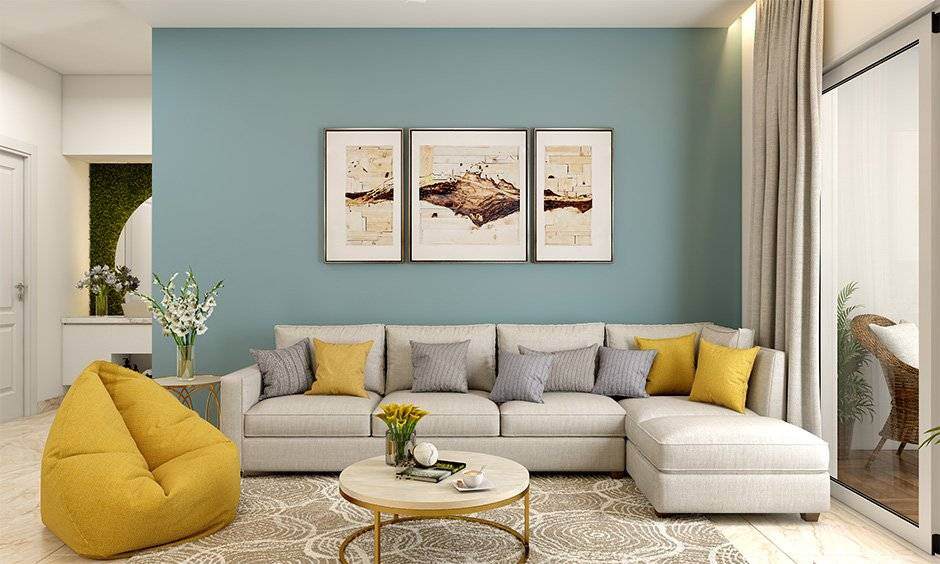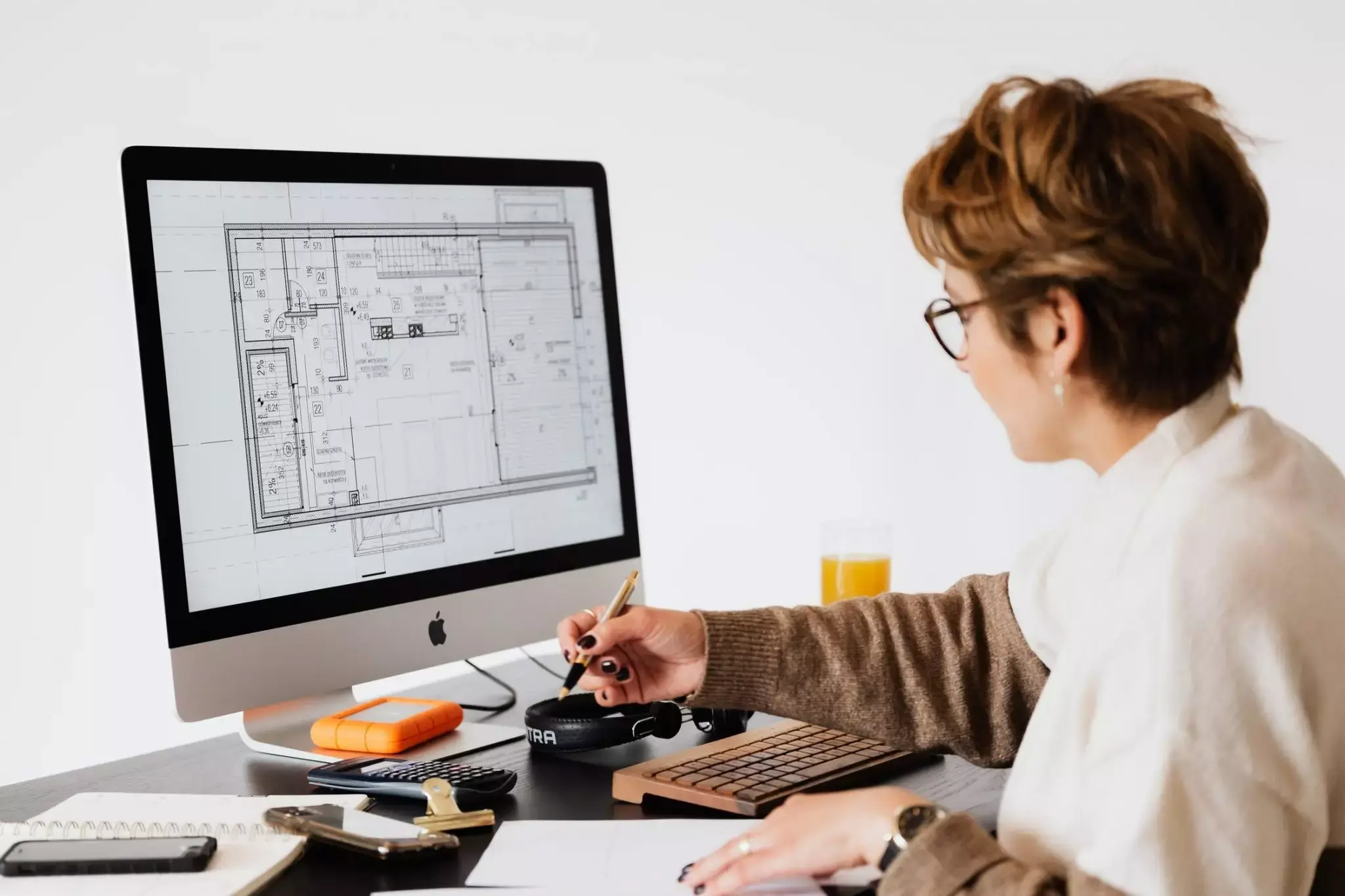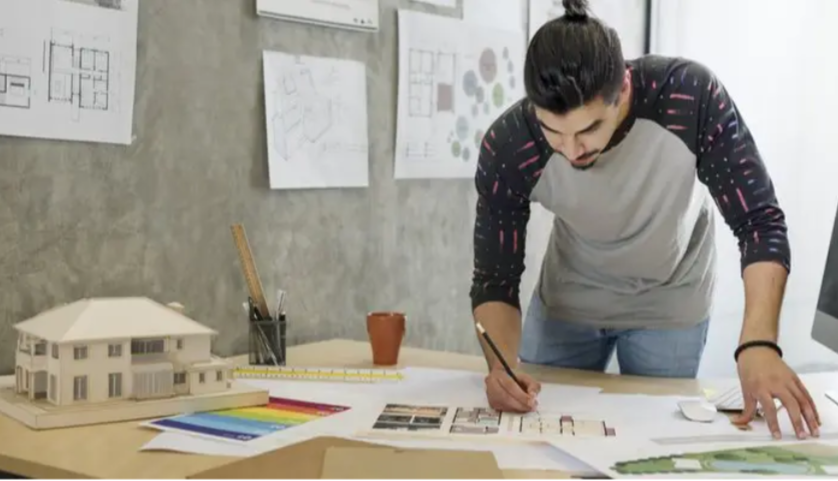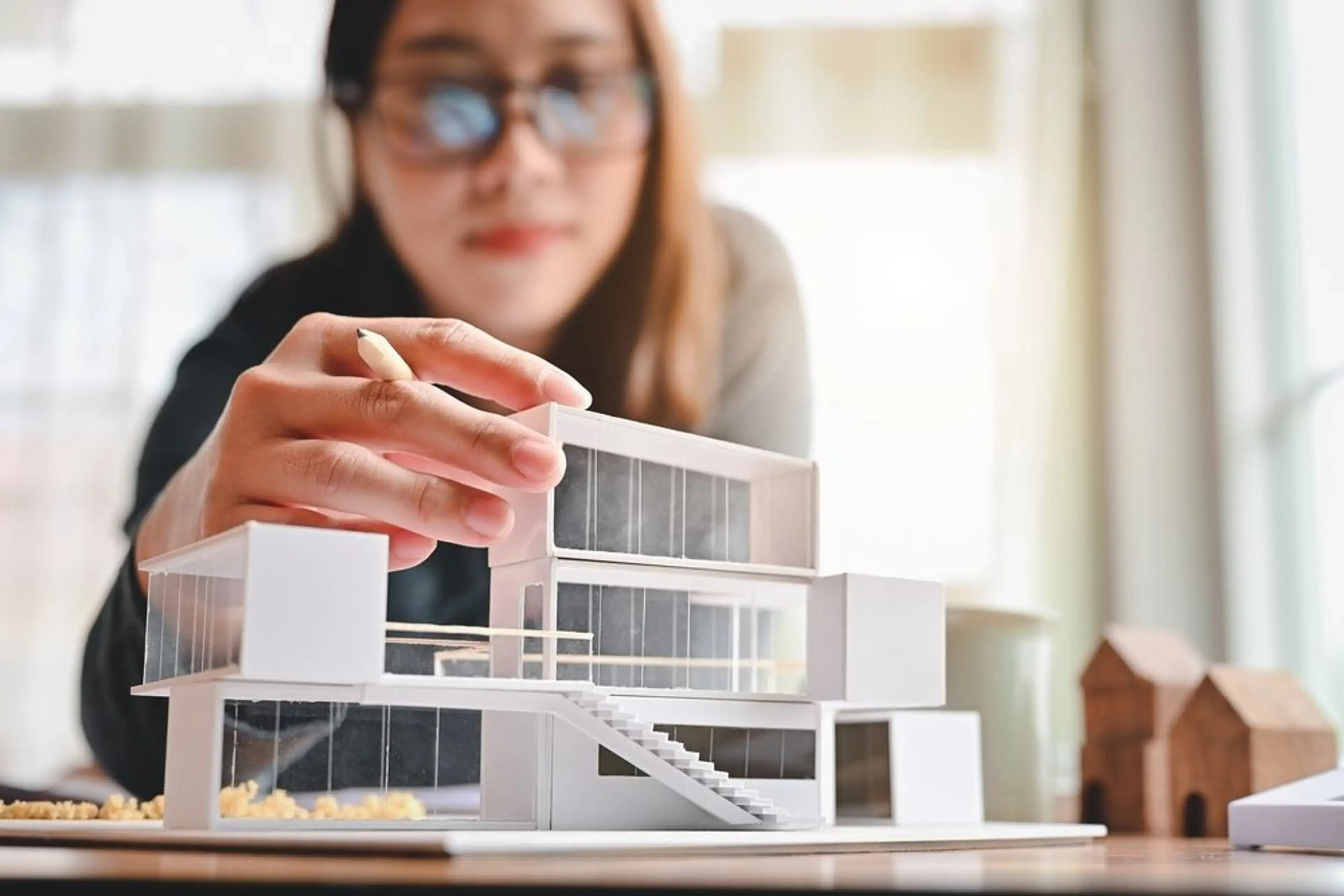
Have you ever wondered who transforms ordinary spaces into extraordinary environments? Interior designers do more than just decorate; they shape how we experience the spaces we live and work in. This profession is crucial in transforming both indoor and outdoor spaces, enhancing their utility and appeal.
Whether you are exploring the best interior design positions or want to learn about remote interior design jobs, this comprehensive guide will illuminate the path to a successful career in interior design.
Understanding the Role of an Interior Designer
The role of an interior designer is multifaceted, involving creativity, technical skills, and project management. It requires a blend of artistic flair and practical knowledge, making it both challenging and rewarding. Designers work on various projects, from sustainable home designs to commercial buildings, ensuring each space is both beautiful and practical.
1. What is Interior Design?
Interior design is the art and science of enhancing a space's interiors to make them comfortable for clients. It involves a deep understanding of architecture, furniture, colour schemes, and spatial arrangements to create cohesive and visually appealing environments. Interior design plays a crucial role in transforming spaces, whether for homes, offices, hotels, or public buildings. Designers balance functionality with aesthetics to meet clients’ needs and preferences.
2. Key Roles and Responsibilities of an Interior Designer
Interior designers have a diverse set of responsibilities that contribute to creating beautiful and functional spaces. Here are seven key roles and responsibilities that define the interior designer job description:
- Client Consultation: Meeting with clients to discuss their needs, preferences, and budgets. This consultation is crucial for tailoring designs to meet specific requirements.
- Project Coordination: Coordinating with contractors, suppliers, and other professionals to ensure projects are completed on time and within budget. Effective communication and problem-solving are vital, especially for junior and part-time roles.
- Design Presentation: Preparing detailed presentations for client approval, including design concepts and project timelines. Clear presentations are crucial for gaining client trust and moving projects forward.
- Design Development: Developing detailed design plans, including floor layouts, colour schemes, and material selections. Designers use software to create 3D models, allowing clients to visualise proposed designs before implementation.
- Trend Awareness: Staying updated with the latest BIM trends and interior design innovations to incorporate modern elements into projects, ensuring appeal and competitiveness, especially for entry-level roles.

Interior Designer Job Description
Here are some key duties that define the interior designer job description:
- Client Consultation: Meeting with clients to understand their needs, preferences, and budgets to tailor designs that meet their expectations and are feasible within financial constraints.
- Design Planning: Developing design plans that include floor layouts, colour schemes, and material selections. Using design software, designers create 3D models to present ideas to clients.
- Project Coordination: Coordinating with contractors, suppliers, and other professionals to ensure projects are completed on time and within budget. Regular communication and problem-solving are essential.
- Site Visits and Measurements: Conducting site visits to measure spaces and assess potential challenges, ensuring designs are practical and can be implemented effectively.
- Budget Management: Managing project budgets carefully, ensuring all expenses are accounted for and remain within the client’s financial limits. This includes sourcing cost-effective materials and negotiating with suppliers.
Essential Skills and Qualifications
To succeed in interior design, one must possess a mix of relevant skills and qualifications.
1. Educational Background
A strong educational foundation is essential. Most interior design jobs require at least a bachelor’s degree in interior design or a related field such as architecture. Courses typically cover design principles, colour theory, space planning, and computer-aided design (CAD)
2. Technical Skills
Technical skills are crucial for effectively carrying out Interior Designer job duties. Proficiency in design software like AutoCAD, SketchUp, and Revit is often required. These tools are essential for creating detailed floor plans, 3D models, and visual presentations. Understanding building codes, safety regulations, and construction methods is also important. Technical skills enable designers to execute their creative visions accurately and efficiently, which is a critical aspect of many jobs in interior design.
3. Soft Skills
Soft skills are equally important. Key soft skills include leadership, communication, time management, problem-solving, and creativity. These skills are valuable across all interior design positions, from junior to senior roles, and are crucial for working independently, especially in freelance roles.
4. Certifications and Courses
Certifications and courses are essential for advancing in interior design. Programmes in CAD, sustainable design, and lighting enhance skills and meet job requirements, boosting employability across various positions.

Interior Designer Career Path
Interior design is a creative field that requires strong attention to detail and a willingness to collaborate with others to achieve the best outcomes. If you possess such skills and qualities, you may find yourself exploring various career opportunities in this field. Let’s discover them!
1. Interior Design Assistant
Salary Range: 5.0 Lakhs to 15.0 Lakhs
An Interior Design Assistant is responsible for creating functional and aesthetically appealing spaces. This role is often one of the first for jobs for newcomers, making it ideal for those seeking entry-level interior design jobs. The duties include assisting with client meetings, sourcing materials, and drafting design plans. The salary for this position typically varies based on skills, experience, and location. This role provides a great foundation for learning the job requirements of an Interior Designer and gaining practical experience.
2. Technical Designer
Salary Range: 2.5 Lakhs to 21.0 Lakhs
A Technical Designer plays a crucial role in translating design concepts into detailed drawings and plans. This position is essential because it ensures that designs are feasible and meet all necessary standards and codes. Technical Designers work closely with architects and Interior Designers to develop precise plans for construction and installation. They use software such as AutoCAD and Revit to create detailed technical drawings. This job often requires a strong background in both design and engineering principles.
3. Industrial Designer
Salary Range: 4.5 Lakhs to 9.0 Lakhs
An Industrial Designer focuses on creating and developing concepts for manufactured products. This role differs from traditional interior design positions but still involves a strong design element. Industrial Designers work on products ranging from furniture to consumer electronics. Their job includes researching market trends, sketching ideas, and creating prototypes. Industrial Designers need to understand materials, production processes, and market trends.
4. Senior Interior Designer
Salary Range: 6.5 Lakhs to 23.0 Lakhs
A Senior Interior Designer leads design projects and manages a team of designers and assistants. This role involves high-level responsibilities such as client consultation, project management, and finalising architectural design concepts. Senior Interior Designers significantly influence project outcomes and are responsible for ensuring that final designs meet client expectations and adhere to budget and timeline constraints.
5. Architect
Salary Range: 2.5 Lakhs to 45.0 Lakhs
An Architect designs and oversees the construction of buildings and structures. While their primary focus is on the structural and functional aspects of a building, they often work closely with Interior Designers to ensure that the work meets client expectations and complies with basic standards. Architects must consider a wide range of factors, including safety regulations, environmental impact, and client needs. They use advanced software to create detailed plans and models and manage construction projects, ensuring they are completed on time and within budget.

Building a Strong Portfolio
Creating a portfolio is crucial for anyone aspiring to succeed in interior design jobs. A well-structured portfolio represents your skills, creativity, and professional experience, helping you stand out in the competitive job market. In simple terms, a design portfolio is more than just a collection of work—it is your communicator, showcasing your capabilities and potential to employers and clients.
1. Importance of a Design Portfolio
A design portfolio plays a prominent role in securing the perfect Interior Designer job. Here are some key reasons why a design portfolio is essential:
- Showcases Your Skills: A portfolio highlights your design abilities and technical skills, which are vital for landing interior design jobs. It allows potential employers to see what you are capable of and how you apply your knowledge in real projects.
- Defines Your Creativity: Creativity is a key component of the Interior Designer role. Your portfolio provides a platform to showcase your unique design style and creative solutions, setting you apart from other candidates.
- Facilitates Career Growth: As you advance in your career, updating your portfolio with new projects and achievements can help you move up to higher interior design positions. A well-maintained portfolio shows continuous improvement and professional development, which can lead to higher salaries.
- Builds Your Professional Identity: A strong portfolio helps establish your professional identity. It communicates your design philosophy and approach, making it easier for employers to understand how you fit into their team and the job description.
- Enhances Job Applications: A compelling portfolio can significantly boost your job applications. It complements your CV by providing visual examples of your work, which is crucial for jobs that rely heavily on visual communication.
- Attracts Freelance Opportunities: For those interested in freelance or remote interior design jobs, a portfolio is essential. It allows potential clients to see your work and decide if your style matches their needs, increasing your chances of securing projects.
2. What to Include in Your Portfolio
Knowing what to include in your portfolio is crucial to effectively showcase your skills and experience. Here are some key elements to consider:
- Introduction and Bio: Start with a brief introduction about yourself, your background, and your design philosophy. This helps potential employers and clients get to know you and understand your approach to design.
- Relevant Projects: Include a variety of projects that highlight your skills and versatility. For entry-level designers, focus on projects completed during your education or internships. For more experienced designers, include a mix of residential, commercial, and hospitality projects to demonstrate your range.
- Technical Skills: Highlight your proficiency with design software such as AutoCAD, SketchUp, and Revit. Technical drawings and renderings can showcase your ability to meet job requirements.
- Design Process: Show your design process by including sketches, mood boards, and concept development stages. This helps employers understand how you approach a project from start to finish.
- Client Testimonials and Feedback: If you have worked on freelance projects or internships, include testimonials from clients or supervisors. Positive feedback can reinforce your credibility and professionalism.
Top Certifications & Courses for Interior Designers
Finding the right certifications and training courses can be a challenging task. Here are some of the best courses to help you secure the right interior design positions in the industry.
1. Interior Design Course by Novatr
Duration: Nine months
Mode: Online
The Interior Design Course by Novatr is a comprehensive programme designed to equip professionals with advanced skills in Building Information Modelling (BIM). This course is ideal for those looking to enhance their expertise in interior design and architecture, making them more competitive in the industry. BIM is a crucial tool that streamlines the design and construction process, improving efficiency and accuracy.
Key Features:
- The course covers all aspects of BIM, from basic principles to advanced applications, including the best architectural tools, ensuring you gain a deep understanding of the technology.
- Learn from industry experts with extensive experience in BIM, architecture, and interior design. Their insights will help you master the skills needed for various interior design positions.
- Practical, hands-on training sessions help you apply BIM techniques to real-world projects, enhancing your ability to handle complex interior design jobs.
2. Interior Design and Architecture Planning by DU SOL
Duration: 10 months
Mode: Online
This course, offered by the School of Open Learning at the University of Delhi, is a comprehensive certification programme designed to equip students with essential skills in interior design and architecture. It is perfect for those looking to start or advance their careers in interior design, providing a strong foundation in both theory and practical application.
Key Features:
- The course is designed for flexibility, making it ideal for students and working professionals. This allows you to balance your studies with part-time or freelance interior design jobs.
- The course emphasises practical skills and knowledge that are directly applicable to interior designer job duties. It prepares you for various roles, including remote and online interior design jobs.
- The programme covers a wide range of topics, from basic design principles to advanced architectural planning, making it beneficial for those seeking entry-level or junior interior designer roles.
3. Interior Design Certification Course by INIFD
Duration: 10 months
Mode: Online
The Interior Design Certification Course by the International Institute of Fashion Design offers comprehensive training for aspiring interior designers. This course provides in-depth knowledge and practical skills, making it suitable for those looking to start their career or enhance their expertise in interior design.
Key Features:
- The course includes practical projects that help students understand real-world interior designer duties and prepare them for jobs in the field.
- INIFD offers opportunities for internships and live projects, providing valuable experience for those seeking junior or entry-level interior designer roles.
- INIFD provides career guidance and job placement assistance, helping students meet the requirements for various interior designer positions.
4. Interior Design Certificate Course by Upskillist
Duration: 16 months
Mode: Online
This online programme is tailored for aspiring interior designers and those looking to enhance their design skills. It offers a flexible learning environment, making it accessible to individuals balancing other commitments, such as part-time or freelance interior design jobs.
Key Features:
- The course is entirely online, allowing students to study from anywhere, making it perfect for those interested in remote or online interior design jobs.
- The course covers a wide range of topics, from fundamental design principles to advanced techniques, preparing students for various roles, including entry-level and more advanced interior design positions.
- Upon completion, students receive a certification that enhances their résumé and meets many job requirements for interior designers. This certification can open doors to numerous job opportunities and potentially increase the salary they can command.
5. Certified Interior Design Course by AND Academy
Duration: 18 weeks
Mode: Online
The Certified Interior Design Course by AND Academy is an intensive 18-week online programme designed to equip students with the essential skills and knowledge needed for a successful career in interior design. This course is ideal for individuals seeking to advance in interior design jobs or transition into the field from other professions. The curriculum focuses on both creative and technical aspects of interior design, ensuring a well-rounded education.
Key Features:
- The course covers a broad spectrum of topics, including design theory, space planning, materials, and finishes. Students engage in hands-on projects that simulate real-world scenarios, providing practical experience crucial for understanding interior designer duties and meeting job requirements.
- AND Academy offers mentorship from industry professionals and opportunities to network with peers and experts. This support helps students gain insights into the industry.
- The online mode of this course includes live lectures, interactive workshops, and real-time feedback sessions. This format is ideal for those managing part-time jobs or other commitments, offering flexibility without compromising the quality of education.
Conclusion
Becoming an interior designer is a rewarding journey that combines technical skills and creativity. By mastering the key aspects of interior design and staying updated with industry trends, you can find your dream interior design job.
For those looking to elevate their expertise, consider applying for the BIM Professional Course for Architects and Interior Designers, offered by Novatr. This course provides in-depth knowledge of BIM and how it impacts the design field, a crucial skill in today’s architectural industry. So, what are you waiting for? Explore the course today and get started on your interior design journey!
For the latest industry trends and information, visit Novatr’s Resource page!
Was this content helpful to you









